What Are Antiviral Herbs?
While viral infections are commonly associated with easy-to-cure ailments, such as the common cold, flu and other illnesses impacting the respiratory system, viruses also contribute to several more serious human pathogeneses, from hepatitis B to hepatocellular carcinoma. Within the past few decades globalization has ushered in several international viral outbreaks, such as the dengue virus and SARS, some of which possess drug-resistant mutations that make them very difficult to treat. As such, many researchers have turned to herbal medicines in an effort to synthesize new and effective antiviral therapies. In recent years, science has indicated that several herbs possess potent protective mechanisms against pathogens such as coronavirus, influenza, enterovirus, and many more.
Viruses can be defined as small infectious agents that reproduce within eukaryotic cells and infect a host organism. Antiviral herbs are agents that possess immunity-boosting mechanisms that signal the body to combat viral pathogens. Antiviral herbs often yield other benefits as well, from anti-inflammatory to cardioprotective properties. Though clinical research verifying the therapeutic efficacy of these herbs is relatively recent, many of these plants have been used in traditional medicine across the globe for centuries.
List of Antiviral Herbs
Turkey Tail Mushroom (Coriolus versicolor)
Turkey Tail, or Trametes/Coriolus versicolor, refers to a flexible polypore fungus that serves as a sapotroph, or an agent that decomposes dying organic matter. The Turkey Tail mushroom can be found anywhere hardwood logs and/or stumps are ready to be decomposed and recycled. While Turkey Tail is rarely ingested for culinary purposes, it is among the most clinically researched medicinal mushrooms, extensively verified for its medicinal potency. Turkey Tail mushrooms are high in protein-bound beta-glucan polysaccharides, which augment the immune system’s ability to combat both viral and bacterial infections.
Clinical research has verified Turkey Tail’s therapeutic efficacy against oral HPV, or Human Papillomavirus (serotypes 16 and 8), which is the precursor to several cancers, most commonly cervical. The results of a placebo-controlled trial published by the International Journal of Medicinal Mushrooms indicated that both Turkey Tail and reishi (or Ganoderma lucidum) were the most effective in treating HPV, with a clearance rate of 88% after two months.
Turkey Tail has been demonstrated to normalize liver enzymes in a laboratory mouse model of toxic hepatitis. Other animal studies have indicated that Turkey Tail ameliorates CCI4-induced liver damage in patients with chronic hepatitis B. Lentinan, a chemical compound that can be isolated from many medicinal mushrooms (including Turkey Tail and shiitake), is the bioactive agent that possesses the most potent antibodies and antiviral properties in these fungi.
Cordyceps
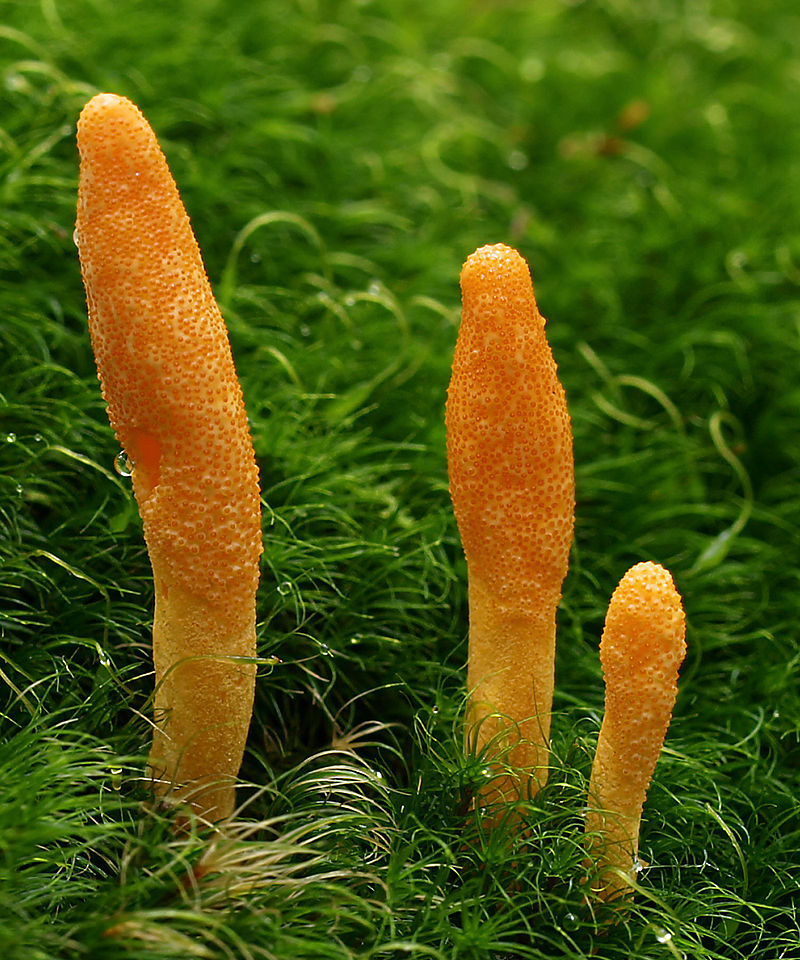
The cordyceps mushroom encompasses a unique genus of approximately 400 species of parasitic fungi that grow from within various insects and arthropods and consume roughly 90% of their hosts’ bodies. Some of the most commonly used cordyceps mushrooms in medicinal tradition include Cordyceps sinensis, or the “caterpillar fungus,” and Cordyceps militaris, which grows in the pupae of butterflies and some other insects. In particular, Cordyceps sinensis has a storied history of medicinal use in Chinese and Tibetan traditional healing and has received much attention in clinical research for its hepatoprotective, renoprotective, anti-hypercholesterolemic, anti-arthritic, and anti-metastatic properties.
A 2014 study published by Oncoscience explored several cordyceps species and their capacity to modulate Epstein-Barr virus, or EBV, replication (EBV refers to the virus that induces mononucleosis). Results yielded that cordycepin, a bioactive compound of the cordyceps mushroom genus, was a natural chemical suppressor of EBV virus replication.
Research has also indicated that cordyceps may have anti-influenza effects. In a 2014 study published by the Journal of Microbiology, researchers found that an extract of Cordyceps militaris ameliorated influenza infection by increasing plasma levels of interleukin-12 cytokines in a laboratory mouse model. Further, Cordyceps sinensis has been verified to have protective effects against chronic Hepatitis B. In a study published by the China Journal of Chinese Materia Medica, researchers found that Cordyceps sinensis mycelia improved liver function and raised plasma albumin in thirty-three patients with chronic hepatitis B. Another study published by the Bulletin of Hunan Medical University found that Cordyceps sinensis was able to treat hepatic fibrosis and adjust T lymphocyte levels in twenty-five patients afflicted with chronic Hepatitis B.
Chaga Mushroom (Inonotus obliquus)

The chaga mushroom is a sapotrophic fungus that typically proliferates on birch, alder, beech, and oak trees. This type of mushroom has an atypical fruiting body, making it somewhat difficult to identify to the untrained eye. It grows parasitically, spreading through the heartwood of decaying logs and trees and ultimately forming a thick, amorphous, tar-like mycelium mass on the external bark. The chaga mushroom thrives in colder climates, and has been used therapeutically in traditional Slavic medicine as far back as the 11th century.
The chaga mushroom has been verified in clinical research to possess a wide range of bioactive and therapeutic properties. A 2014 study published by the Russian journal Voprosy virusologii (Questions of Virology) dedicated its attention to chaga’s antiviral capacity by examining subfractions of the mushroom extracted with water and alcohol. Results indicated that the subfractions had protective effects on Vero cells infected with Herpes simplex virus (HSV). Further, chaga did not produce any toxicity in the Vero cells themselves. Similar in vitro studies have indicated chaga extract’s antiviral activity against two strains of the human influenza virus (types A and B) as well as Hepatitis C.
Chaga has been demonstrated in laboratory research to have efficacy in protective action against human hepatoma and colon cancer cell lines, in addition to generalized immunomodulatory effects.
Reishi Mushroom (Ganoderma lucidum or lingzhi)

The reishi mushroom, otherwise known as Ganoderma lucidum or its Mandarin translation línghzhī, is a sapotrophic fungus that thrives in warmer climates throughout Asia, Australia, South America, Southern Europe, and parts of the southern United States. It is visually distinguishable by its unique reddish-brown color and hardy, woody texture. Reishi is among the most historically prevalent and medicinally potent fungi, with therapeutic origins extending as far back to the Ch’in Dynasty (221-207 BCE) of Imperial China. Reishi is clinically indicated to have an enormous variety of medicinal capabilities, including anti-inflammatory, anti-cancer, anti-diabetic/obesity, and anti-hypercholesterolemic. It is also known for its antiviral properties.
In a placebo-controlled study published by the International Journal of Medicinal Mushrooms, researchers found that reishi yielded an 88% clearance of oral HPV in patients afflicted with HPV serotypes 16 and 18 (alongside Coriolus versicolor, or Turkey Tail). Reishi has also demonstrated a protective effect against HIV-1 protease activity, as well as the Hepatitis B virus in HepG2215 cells. Some smaller, preliminary studies have also revealed that an oral administration of reishi was effective against postherpetic neuralgia (a complication of shingles) in elderly patients. At high doses, reishi was able to ameliorate pain and heal lesions without inducing toxicity, though these changes were observed in a small sample of individuals over a short-term period.
Schisandra (Schisandra chinensis)

Schisandra, or Schisandra chinensis, is a deciduous vine native to heavily forested areas in Russia and China. The plant is distinguishable by its vivid red berries, which have an extensive history of medicinal use in Chinese traditional healing. In Mandarin, schisandra berries are referred to as wu wei zi, or “five-flavored fruit,” because of their unique mixture of sour, bitter, sweet, salty, and pungent qualities. Schisandra is particularly well-known for its anti-aging, hepatoprotective, and anti-fatigue capabilities. It is classified as an adaptogenic herb, which can be defined as an agent that improves an organism’s physiological ability to cope with stress and/or trauma. In other words, schisandra’s mechanism of action involves modulating stress hormones in the blood. Its primary bioactive components are dibenzocyclooctadiene lignans, volatile oils with potent antioxidant properties.
Dibenzocyclooctadiene lignans have demonstrated potent antiviral action, including the inhibition of Human Immunodeficiency Virus. In a 2015 study published by the Journal of Microbiology, researchers found that, among six lignans extracted from Schisandra chinensis fruits, schisandrin B and deoxyschizandrin inhibited HIV-associated DNA polymerase activity in vitro. Another 2010 study published by Archives of Pharmacological Research yielded similar results. Researchers found that a 70% aqueous acetone extract from the fruits of the schisandra plant had inhibitory activity against HIV-1-induced synctium proliferation.
Schisandra lignans have demonstrated potent antiviral activity against Epstein-Barr virus, which is one of eight viruses of the herpes family. In a 2013 study of schisandra’s therapeutic potential published by Natural Product Communications, researchers observed both anti-HIV-1 activity and bioactivity in the early inhibition of Epstein-Barr virus via antigen activation in vitro.
Olive Leaf

The leaves of the olive tree, or Olea europea, are distinguishable for their thin, oblong shape and distinctive bitter taste. Some of the most potent bioactive compounds within olive leaf extracts include terpenoids, secoiridoids, and sugar alcohols, as well as oleuropein, which is a prevalent polyphenol yielding antiviral, antimicrobial, hypoglycemic, and cardio-, neuro-, and hepatoprotective properties.
In clinical trials, oleuropein has been known to demonstrate potent inhibitory effects against herpes mononucleosis, hepatitis, rotavirus, canine parvovirus, feline leukemia, respiratory syncytial virus, and para-influenza type 3 virus. In a 2005 study, an olive leaf extract of oleuropein was also revealed to inhibit viral haemorrhagic sepitcaemia virus (VHSV), a deadly infectious disease affecting fish.
A 2003 study published by Biochemical and Biophysical Research Communications examined the anti-HIV activity of an olive leaf extract. Researchers found that the oleuropein extract inhibited the infectious cell-to-cell transmission of HIV-1 lymphocytes, and also inhibited HIV-1 replication in infected H9 cells in vitro.
Elderberry (Sambucus)

Elderberry encompasses a variety of species within the genus Sambucus, family Adoxaceae. Elderberries are generally identifiable by their pinnate, or serrated, feather-like leaves, whitish flowers, and clusters of black, blue, or red berries. Elderberries are widespread and commonly cultivated for medicinal use throughout the Northern Hemisphere. Traditionally, elderberry extract was utilized to treat fever and rheumatism throughout Central and Eastern Europe. It is also well-known for its antiviral and antioxidant potency, and has been verified to possess anti-influenza effects in placebo-controlled clinical trials. Elderberry and elderflower’s most bioactive components include pectic polysaccharides and phenolic compounds.
In a 2012 study published by Bioscience, Biotechnology, and Biochemistry, researchers evaluated the therapeutic potential of elderberry juice against human influenza-A virus. Results indicated that elderberry juice suppressed viral proliferation in the bronchial fluid of infected laboratory mice. Further, oral administration of elderberry juice increased influenza-neutralizing antibodies in bronchoalveolar lavage fluids in vivo. Researchers concluded that elderberry juice may be capable of stimulating immune response and inhibiting viral replication of influenza-A infection in humans.
Studies have validated elderberry liquid extract’s inhibitory effect against human influenza-B virus as well. A 2011 study published by BMC Complementary and Alternative Medicine found that elderberry liquid extract yielded antimicrobial activity against various types of pathogenic bacteria, including Streptococcus pyogenes, Branhamella catarrhalis, and both human influenza type A and B in vitro.
Echinacea
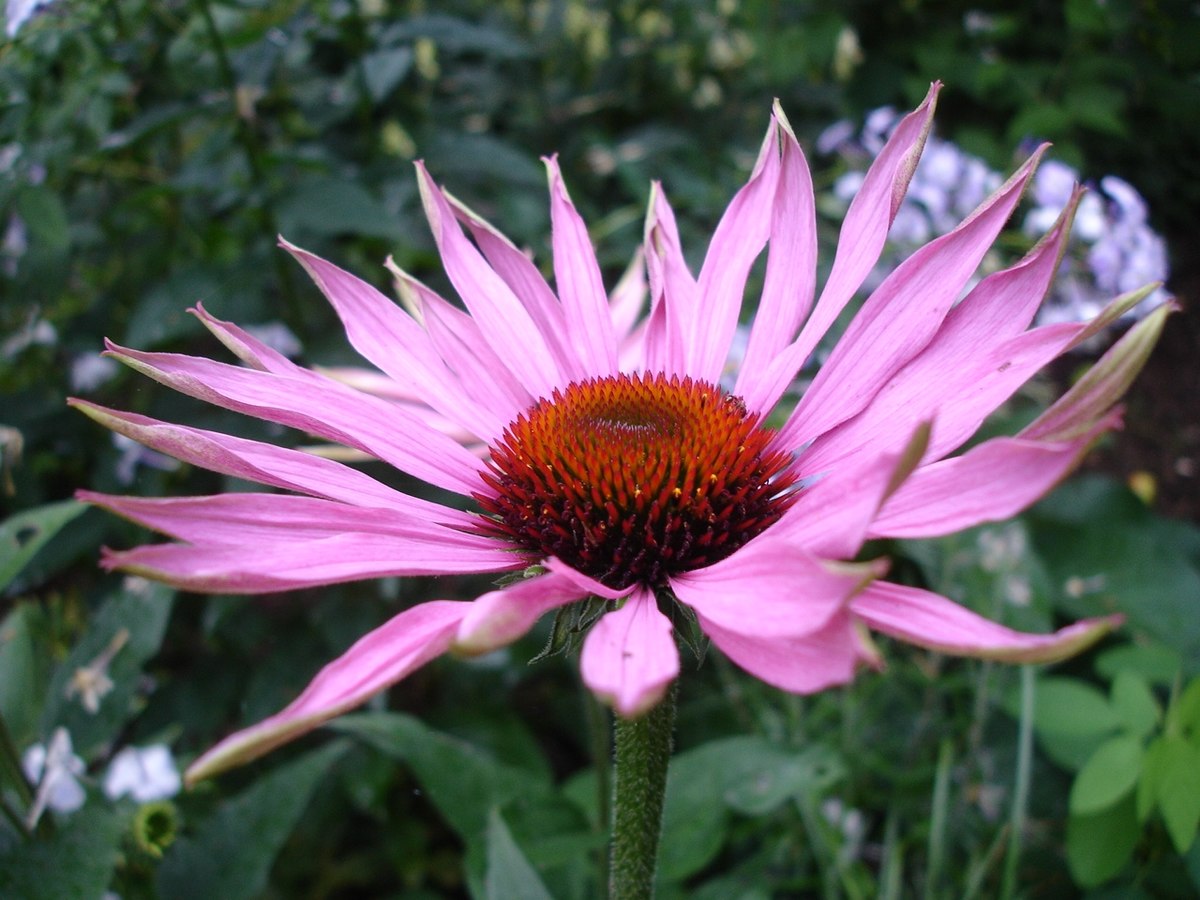
Echinacea, collectively and colloquially referred to as “coneflowers,” refers to a genus of herbaceous, perennial flowering plants endemic to eastern and central North America. The genus is comprised of nine different species, each of which is distinguishable by a spiny, bulbous pistil and slender “quill petals” that can either be white, pale pink, or yellowish in color. Extracts from this flower are known for their medicinal properties, particularly antimicrobial, antiviral, and possibly antibiotic. Clinical evidence points to Echinacea as a potent therapeutic agent against various respiratory viruses, from the common cold to avian and swine-origin influenza virus.
In a 2009 study published by Virology, researchers examined the efficacy of a standardized extract from Echinacea in combating the H1N1 strain of swine influenza. Results yielded that H1N1-type influenza, pathogenic avian influenza, and swine-origin influenza were all inhibited when introduced to Echinacea purpurea in vitro. Specifically, the Echinacea extract impacted the receptor binding mechanism of the viruses, meaning it helped prevent viral entry into cells.
A 2011 study published by Pharmaceuticals revealed that Echinacea extract is also effective against the herpes simplex virus, respiratory syncytial virus, and rhinoviruses.
Calendula

The genus Calendula is comprised of approximately twenty species of annual and perennial flowering plants. Most commonly known as marigolds, Calendula flowers are distinguishable by their tufts of vivid yellow or orange flowers, and they are known for being quite easy to grow and cultivate. Marigolds are rich in various health-promoting, antiviral, and antioxidant properties. Their extracts are often utilized in cosmetics and anti-aging serums, as they contain an abundance of the antioxidants cartenoid and lutein, which may promote moisture and elasticity of the skin. Calendula oil is frequently used as a healing agent for minor cuts, burns, and dermatological irritations. In terms of antiviral potential, various Calendula species have been demonstrated in clinical research to inhibit several pathogenic infections, including vesicular stomatitis, rhinovirus, Epstein-Barr virus, and HIV.
In a study published by Biomedicine & Pharmacotherapy, researchers found that extracts from Calendula officinalis flowers yielded a time- and dose-dependent inhibition of HIV-1 reverse transcription activity. In other words, Calendula has the capacity to inhibit viral particles from entering living cells when administered at the correct dosage and stage.
In terms of Calendula’s mechanism of action, it is likely that its antiviral potential emerges from its triterpenoid saponins, compounds that have demonstrated inhibitory effects against various pathogenic microbes. A 1991 study published by Planta Medica found that triterpenoid saponins extracted from the species Calendula arvensis inhibited the multiplication of both vesicular stomatitis virus and rhinovirus infection in cell cultures in vitro.
Astragalus Root

Astragalus refers to a genus of approximately 3,000 herbaceous, perennial plants, and is thus the largest genus of flowering plants currently known. The plants within the genus are members of the legume families Fabaceae and Faboideae. The type most commonly used in traditional medicine is Atragalus membranaceous, also known by its Chinese nomenclature Huáng Qí, or simply “Astragalus root.” The plant is commonly harvested in northern and eastern China, as well as parts of Mongolia and Korea. Astragalus root is traditionally used for its immunostimulating effects, which are mechanistic of the most bioactive substance in the plant root, Astragalus polysaccharide (APS). Astragalus polysaccharides are also purported to have potent antiviral properties.
A 2014 study published by Evidence-Based Complementary and Alternative Medicine evaluated Astragalus polysaccharides’ ability to regulate bodily immunity and ameliorate immune-associated diseases. Specifically, researchers explored the protective effects of APS on herpes simplex virus (HSV-1)-infected astrocytes, or glial cells. Results demonstrated that APS inhibited HSV-1 infection by promoting Toll-like receptor 3 (TLR3) and nuclear factor-κB (NF-κB) in astrocytes in vitro.
Similar studies have elucidated Astragalus polysaccharides’ ability to inhibit viral diseases in vitro and in vivo. A study published by the Journal of Animal Science and Biotechnology found that Astragalus root administration inhibited H9N2 avian influenza in infected chickens by promoting humoral immune response in vivo. Researchers conducted further investigation in vitro, and found that APS treatment enhanced interleukins IL-4, IL-6, IL-10, LITAF (lipopolysaccharide-induced tumor necrosis factor), IL-12, and influenza antibodies after a week of treatment.
Cat’s Claw (Uncaria tomentosa)
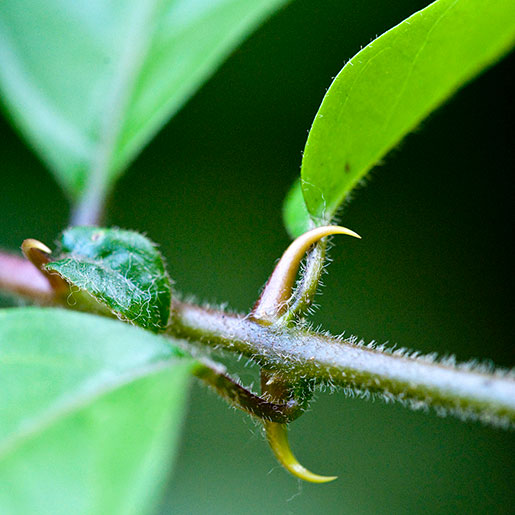
Cat’s claw, or Uncaria tomentosa, refers to a long-stemmed, woody vine indigenous to tropical areas of South and Central America. Its name is derivative from its hook-like thorns, which resemble the claws of a cat. Cat’s claw has a long history of medicinal use in the indigenous healing traditions of South and Central America; its use can be traced back to the pre-Columbian Incan Empire (between 1400 and 1530). It is primarily used for its immunostimulating and anti-inflammatory properties, and is purportedly effective in the treatment of various gastrointestinal disorders.
A 2008 study published by International Immunopharmacology evaluated Uncaria tomentosa’s antioxidant and antiviral activities in the treatment of Dengue Virus, a mosquito-borne viral infection that causes fever, severe joint pain, gastrointestinal distress, and skin rash. Researchers examined antiviral activity in vitro by observing viral antigens in monocytes via flow cytometry. Results indicated that an alkaloid fraction of cat’s claw strongly decreased monocyte infection by reducing cytokines TN-alpha and IFN-alpha.
Evidence indicates that cat’s claw may also have antiherpetic capabilities. A 2014 study published by Food and Chemical Toxicology evaluated Uncaria tomentosa’s therapeutic efficacy against herpes in vitro. Researchers used a hydroethanolic extract from cat’s claw bark and purified fractions of Uncaria tomentosa acid glycosides and alkaloids and evaluated their antiherpetic and antimutagenic effects via Comet assay. Results yielded that, though the purified treatment of cat’s claw and the ethanolic extract demonstrated low antimutagenic activity individually, when administered together they presented an antiherpetic effect.
Licorice Root (Glycyrrhiza glabra)
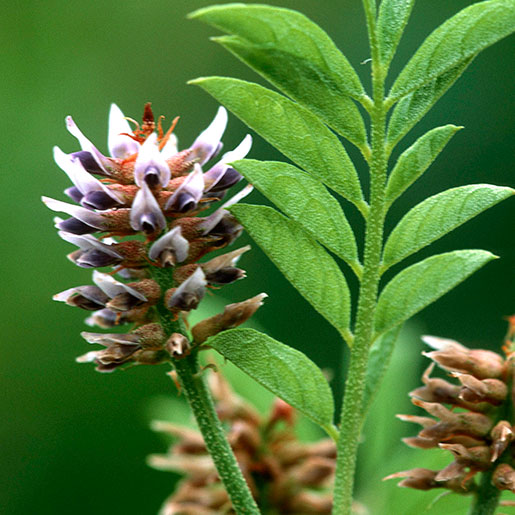
Licorice refers to the root of the plant Glycyrrhiza glabra, a perennial legume found throughout the Mediterranean and parts of southeastern Asia. It is perhaps most well-known for its taste, and its flavor is often used for sweetening confectionary or the root is eaten directly as a candy. Licorice root also has a long history of medicinal use in both Chinese traditional medicine and the Indian Ayurvedic healing system. In Egypt, licorice has historically been used as a mucokinetic, or an agent that clears congestion and mucus from the respiratory pathways. In general, licorce root has a history of therapeutic uses in the treatment of cough, asthma, gastrointestinal distress, ulcers, acid reflux, and adrenal stress. Clinical research has also pointed to licorice root as possessing anti-inflammatory and antiviral properties.
A 2003 study published by The Lancet evaluated licorice root’s antiviral potential in the treatment of SARS, or Severe Acute Respiratory Syndrome. Specifically, researchers observed antiviral activity of the active components ribavirin, 6-azauridine, pyrazofurin, mycophenolic acid, and glycyrrhizin against SARS-associated coronavirus infection. Results yielded that, of all tested compounds, glycyrrhizin was the most potent in inhibiting viral replication.
This discovery prompted further research into licorice root’s bioactive compounds. A 2013 study published by Pharmacognosy Research evaluated the antiviral activities of an aqueous extract of Glycyrrhiza glabra and ribavirin, an antiviral therapeutic protein, in the treatment of acute infectious Newcastle disease. Results indicated that both ribavirin and licorice root extract demonstrated potent antiviral activity in embryonated poultry eggs without inducing toxicity.
Further research has indicated that licorice’s bioactive components may have therapeutic efficacy against herpes virus simplex, HIV, hepatitis virus, and influenza virus. However, if ingested in large quantities over extended periods of time, the licorice component glycyrrhizic acid can be dangerous, eventually inducing high blood pressure and potassium deficiency.
Garlic (Allium sativum)

Garlic, or Allium sativum, is a common bulbous plant of the onion genus that boasts a long history of both culinary and medicinal use. While garlic can be found and cultivated in North America and Europe, it is likely that all cultivars derive from the single-clove garlic plant that is indigenous to the Yunnan province of China. Garlic is known for its therapeutic effects related to ailments and diseases of the cardiovascular system, including elevated blood pressure, high cholesterol, coronary heart disease, and atherosclerosis. It may also have anti-diabetic, anti-metastatic, anti-microbial, anti-protozoal, antifungal, and antiviral properties.
In a 1993 study published by the Chinese Medical Journal, researchers observed the antiviral activities of garlic extract on human cytomegalovirus, a beta-herpesvirus, in vitro. Results indicated that a potent antiviral effect was produced when garlic extract was applied persistently to infected cells after they were removed from the tissue culture medium.
A 1992 study published by Planta Medica also observed garlic extract’s antiviral potency in vitro. Researchers evaluated the virucidal effects of the following garlic-extracted compounds: diallyl thiosulfinate (allicin), allyl methyl thiosulfinate, methyl allyl thiosulfinate, ajoene, alliin, deoxyalliin, diallyl disulfide, and diallyl trisulfide. Antiviral activity was assessed against herpes simplex virus 1, herpes simplex virus type 2, parainfluenza virus type 3, vaccinia virus, vesicular stomatitis virus, and human rhinovirus type 2. Results indicated that ajoene, allicin, allyl methyl thiosulfinate, and methyl allyl thiosulfinate (in descending order of potency) had the most antiviral activity against all tested pathogens.
Oregano (Origanum vulgare)
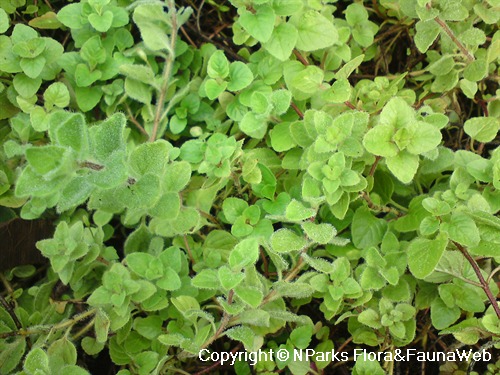
Oregano, or Origanum vulgare, refers to a flowering perennial herb endemic to Western and Southeastern Eurasia, as well as parts of the Mediterranean. It is a member of the mint family, and has a long history of culinary use, particularly in Italian, Turkish, and Greek cuisine. It also has a history of medicinal use in the treatment of respiratory, gastrointestinal, and urinary tract diseases. Its primary active component is carvacrol, which can also be found in pepperwort and wild bergamot.
A 2014 study published by the Journal of Applied Microbiology examined the viral efficacy of carvacrol and oregano oil in treatment against nonenveloped murine norovirus, or MNV. While oregano oil alone did not significantly inhibit MNV infectivity, carvacrol produced a significant reduction within fifteen minutes of exposure in vitro.
A 2011 study published by the Brazilian Journal of Microbiology assessed the antiviral activity of Mexican oregano in essential oil form and as a carvacrol extract. Researchers found that oregano essential oil yielded antiviral activity against acyclovir-resistant herpes simplex virus type 1, cyclovir-sensitive HHV-1, human respiratory syncytial virus (HRSV), and bovine viral diarrhoea virus (BVDV) via MTT assay. However, human rotavirus and bovine herpesvirus tye 2 were not significantly attenuated by essential oil alone. Carvacrol exhibited potent antiviral efficacy against human rotavirus, but was less effective in treatment of the other viral infections.
References:
https://www.ncbi.nlm.nih.gov/pmc/articles/PMC3841996/
https://www.ncbi.nlm.nih.gov/pubmed/24520776
https://www.ncbi.nlm.nih.gov/pmc/articles/PMC4227229/
https://www.ncbi.nlm.nih.gov/pmc/articles/PMC4103721/
https://www.sciencedirect.com/science/article/pii/B9780443072772000088
https://www.ncbi.nlm.nih.gov/pubmed/24447975
https://www.ncbi.nlm.nih.gov/pubmed/12814717
http://www.discoverymedicine.com/Yajing-Chang-2/2017/04/coriolus-versicolor-polysaccharopeptide-as-an-immunotherapeutic-in-china/
https://hort.purdue.edu/newcrop/ncnu07/pdfs/charlebois284-292.pdf
https://www.ncbi.nlm.nih.gov/pubmed/16562834
https://www.ncbi.nlm.nih.gov/pubmed/1654576
http://www.dl.begellhouse.com/journals/708ae68d64b17c52,266d4152107fca7a,3512deba5cc9e72b.html
https://www.ncbi.nlm.nih.gov/pubmed/19451609
https://www.ncbi.nlm.nih.gov/books/NBK92757/
https://www.ncbi.nlm.nih.gov/pubmed/24779581
https://europepmc.org/abstract/med/12212155
https://www.ncbi.nlm.nih.gov/pubmed/8389276
https://www.ncbi.nlm.nih.gov/pmc/articles/PMC4058675/
https://www.ncbi.nlm.nih.gov/pmc/articles/PMC3729712/
https://www.ncbi.nlm.nih.gov/pubmed/9207986
https://www.ncbi.nlm.nih.gov/pubmed/22972323
https://www.ncbi.nlm.nih.gov/pmc/articles/PMC3056848/
https://www.ncbi.nlm.nih.gov/pubmed/25037880
https://www.ncbi.nlm.nih.gov/pubmed/12878215
https://www.ncbi.nlm.nih.gov/pmc/articles/PMC5793319/
https://www.ncbi.nlm.nih.gov/pmc/articles/PMC4032839/
http://www.dl.begellhouse.com/journals/708ae68d64b17c52,1b1b20957ef5c8f4,210d57c00e88b78c.html
https://www.ncbi.nlm.nih.gov/pmc/articles/PMC3768712/
https://www.ncbi.nlm.nih.gov/pubmed/15869811
https://www.ncbi.nlm.nih.gov/pmc/articles/PMC3498851/
https://www.ncbi.nlm.nih.gov/pmc/articles/PMC3897011/
https://www.ncbi.nlm.nih.gov/pmc/articles/PMC3121254/
https://www.ncbi.nlm.nih.gov/pubmed/25069286
https://www.ncbi.nlm.nih.gov/pmc/articles/PMC2785784/
https://www.ncbi.nlm.nih.gov/pubmed/18279801
https://www.ncbi.nlm.nih.gov/pmc/articles/PMC4303894/
https://www.ncbi.nlm.nih.gov/pmc/articles/PMC4098889/
https://www.ncbi.nlm.nih.gov/pmc/articles/PMC2799634/
https://www.ncbi.nlm.nih.gov/pmc/articles/PMC5378736/
https://www.ncbi.nlm.nih.gov/pubmed/1470664
https://www.researchgate.net/publication/44639645_Anti-HIV-1_Activity_of_Lignans_from_the_Fruits_of_Schisandra_rubriflora
https://www.ncbi.nlm.nih.gov/pubmed/25740376
https://www.ncbi.nlm.nih.gov/pubmed/23738455
https://brunswicklabs.com/blog/chaga-functional-components-and-biological-activity/
https://europepmc.org/abstract/med/1693509



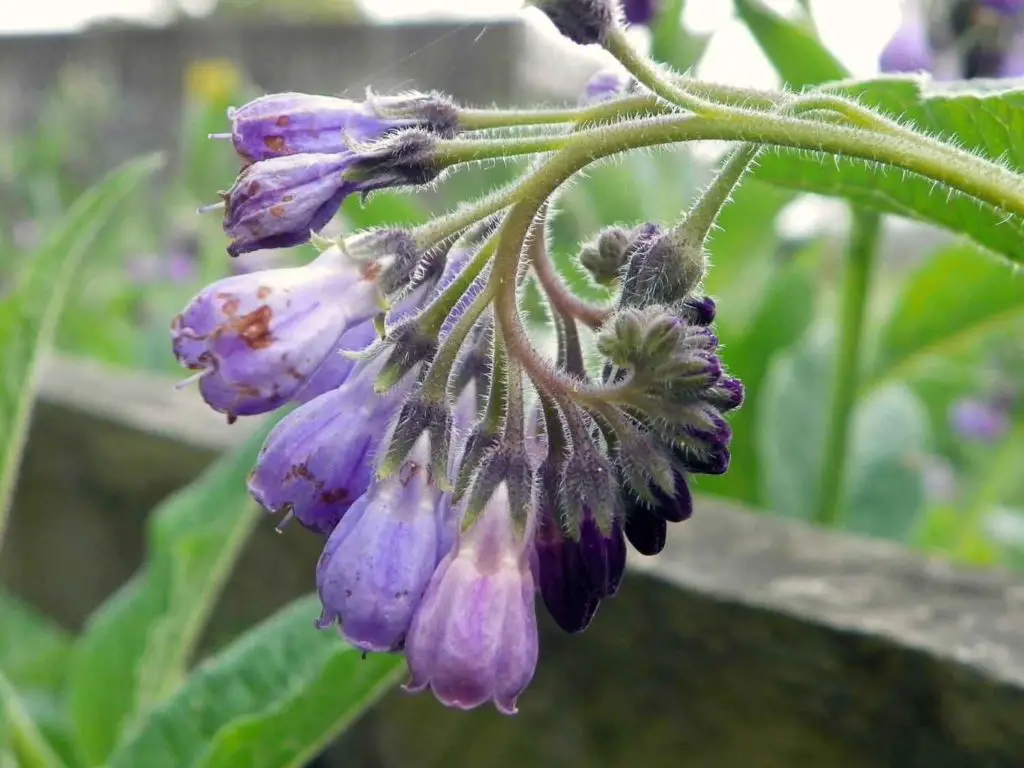
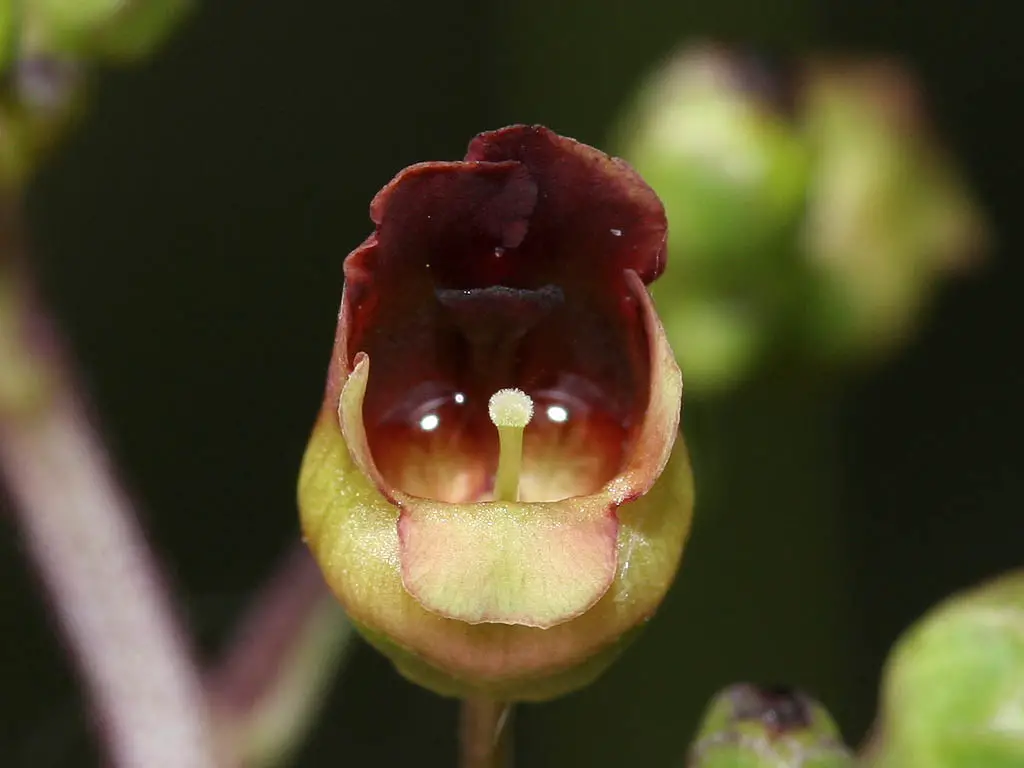
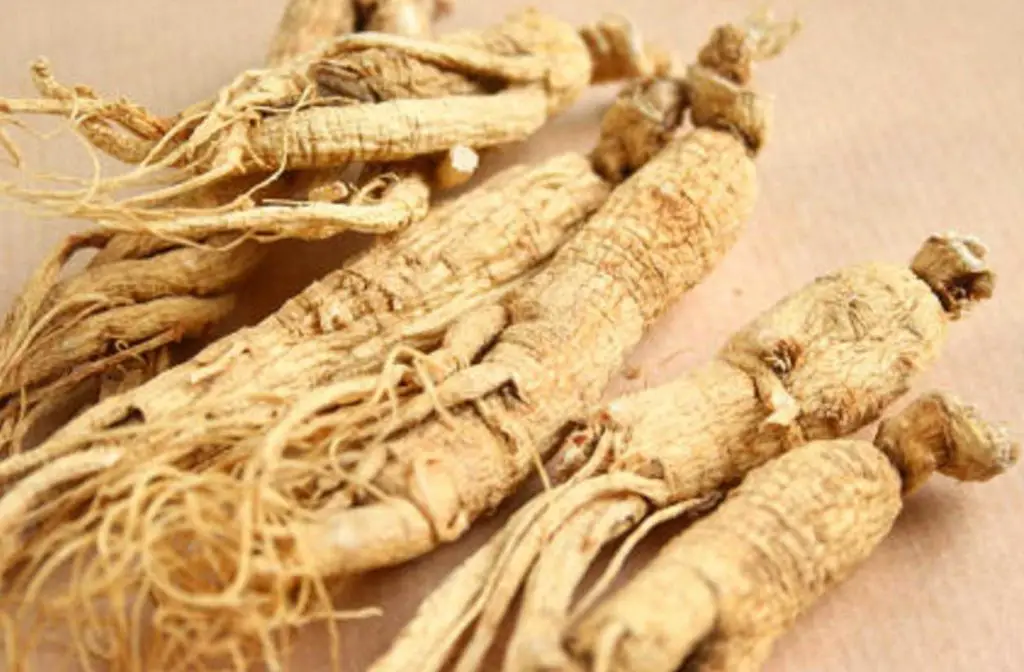
Darcy,
Thank you so much for all your hard work studying, documenting and sharing your knowledge. To your health.
Respectfully, Robin
Thanks Robin, hope to see you back!
Excellent overview, could expand on the mushrooms, ie lions mane, tiger milk, etc. which boost no killer cells and seem to have affinity for cns,respiratory tract and cardiovascular system.anecdotal evidence reveals that lions mane mushroom can double the ejection fraction in patients with chf. Nothing comparable with traditional medicine.
Hi Jerry, I have written about Lion’s Mane. You might want to check it out here. I haven’t seen any studies about Lion’s Mane and Heart failures. Maybe you can point me to studies so I can read up on it. Thanks Jerry!
Why isnt peppeemint on here? I’ve seen peppermont oil effectively prevent and shorten cold sores. It needs to be on this list.
I’m happy to share my herpes recovery journey with all of you who are reading this. For over five years, I have been praying for a permanent cure for my herpes virus infection. Despite seeking treatment from several medical professionals, I didn’t see any improvement.
A few weeks ago, while browsing the internet for more information on how to cure my condition, I stumbled upon numerous testimonials from people who had been cured by a remarkable African traditional herbal doctor named Dr. Utu. Without any hesitation, I reached out to him for a solution.
Dr. Utu guided me through the process and began my treatment. To my absolute joy, after just four weeks of using his remedies, I felt a significant improvement. Encouraged, I went for a hospital checkup where I was declared negative for herpes virus infection. To clear my doubt, I waited two more months and returned to another hospital, only to be pleasantly surprised once again with a negative result.
I felt compelled to share this wonderful experience in hopes of helping others who are struggling with similar issues. If you’re seeking a herbal remedy to permanently cure you herpes virus infection and similar ailments, I encourage you to contact Dr. Utu